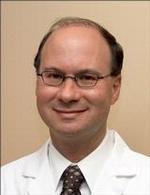
Frank Miller, MD, sees a better way.
Rather than the invasive, potentially erroneous method of liver biopsy used to investigate liver damage, the professor in radiology is researching the validity of a method known as magnetic resonance elastography (MRE).
Comparable to other techniques like magnetic resonance imaging (MRI), ultrasound, and computed tomography, MRE is the only one to produce an image analogous to palpitation. Using it as a clinical application to non-invasively evaluate the physical properties, such as elasticity or stiffness, of tissue in the liver, MRE allows researchers to see small abnormalities, or those located in areas that are inaccessible by a physician and cannot be detected by touch. MRE measures these physical properties by combining MRI imaging with sound waves to create an elastogram, or visual map. Developed by Richard Ehman, MD, at the Mayo Clinic, MRE imaging only takes a few minutes to perform and could be done at the end of a routine 30-minute MRI liver exam.
“Magnetic resonance elastography has the potential to replace biopsies for assessing liver fibrosis and to evaluate nonalcoholic steatohepatitis,” Miller said. “Although the techniques require further evaluation, MRE also has the potential to look at the stiffness of other organs, too.”
Long considered the gold standard for detecting liver fibrosis, which can lead to cirrhosis and liver failure, biopsy is an invasive procedure that maintains the potential for erroneous results. With a number of recent studies showing the accuracy of MRE in diagnosing and staging liver damage, it is increasingly being considered as a non-invasive alternative.
In comparing MRE to diffusion weighted imaging (DWI) and conventional anatomic MR imaging, Miller is proving MRE to be a reproducible procedure with greater predictability and accuracy than other noninvasive approaches. Additionally, he is researching the precision of MRE and biomarkers in staging fibrosis due to hepatitis C in liver transplant recipients.
Although focused on evaluating MRE as a diagnostic tool for liver disease, Miller is also collaborating with Teresa Woodruff, PhD, director of the Institute for Women’s Health Research, to investigate the technique in measuring the rigidity of ovaries in patients with polycystic ovary syndrome (PCOS), a common hormonal disorder among women of reproductive age.
“Dr. Woodruff is a world-renowned researcher who had a National Institutes of Health grant to evaluate PCOS and enlisted our help to evaluate the ovary with MRE, which has proven to be difficult based on its size and location,” Miller said.
Recruiting Tim Carroll, PhD, associate professor in radiology, and biomedical engineering students Mayank Vijayvergia, Gaurav Gadodia, and Samantha By, Miller and his collaborators are researching new ways of developing better images of ovaries using MRE. He is also working with Andrew Larson, PhD,
associate professor in radiology, hepatologists, and surgeons to use MRE to evaluate nonalcoholic fatty liver disease and nonalcoholic steatohepatitis.






